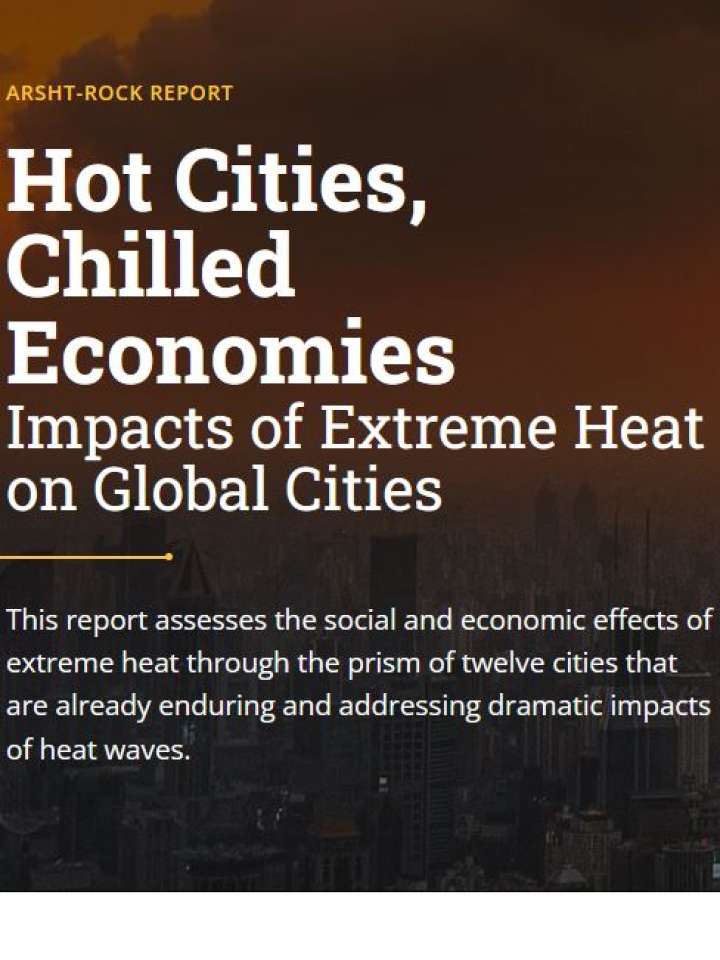Hot cities, chilled economies: Impacts of extreme heat on global cities
This report assesses the social and economic effects of extreme heat through the prism of twelve cities that are already enduring and addressing dramatic impacts of heat waves. The danger posed by extreme heat in urban centers—particularly in the global South—defies overestimation. By 2050, more than 970 cities will experience average summertime highs of 35˚C (95°F)—nearly triple the 354 cities that already do. The urban population exposed to these sky-high temperatures will increase by 800 percent, reaching 1.6 billion by mid century.
The main takeaways from this report are the following:
- Heat reduces labor productivity in a wide range of ways.
- Losses from heat-related reductions in worker productivity are high and mounting.
- These reductions in worker productivity may affect workers’ incomes.
- Cities in the global South face greater, more rapidly increasing impacts.
- Impacts fall most heavily on those least able to bear them.
- Heat has gendered impacts.
- How heat affects economies and societies varies from city to city.
Explore further
